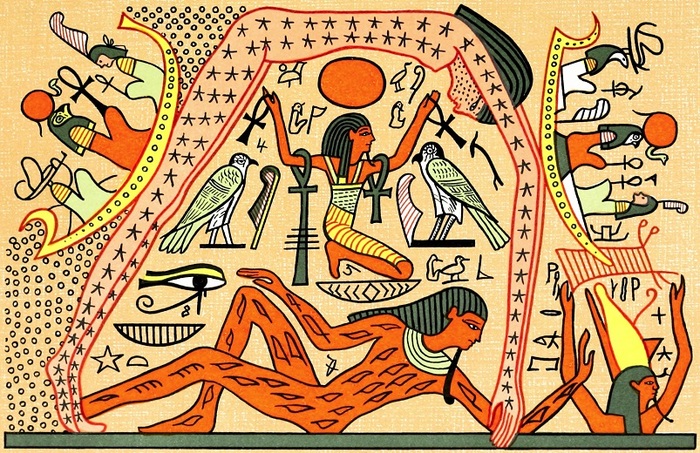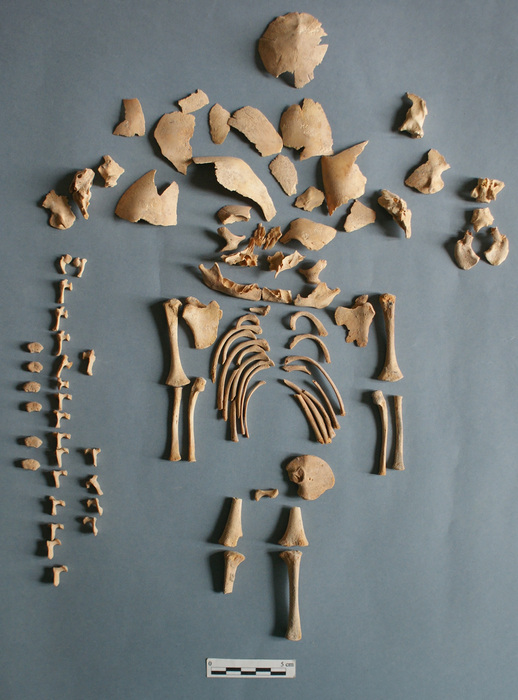In the necropolis of ancient Egypt, as it happens in the vicinity of today's cemeteries, there were workshops that, like the funeral homes of the present, prepared those who went to the afterlife.
Now, Egyptian and German archaeologists have found more than a hundred vessels from the
burial ground
from the city of the dead of Saqqara.
Their analysis has made it possible to identify the substances they used to embalm them.
Better still, many of them are inscribed with what they contained and instructions on how and where to use it to prepare the mummies for eternal life.
Despite several embalming papyri and recent analyzes of several mummified remains, the complex mummification process of Egyptian civilization remains largely a mystery.
They were known to use beeswax, shoe polish obtained from the Dead Sea, cedar oils from present-day Lebanon or pistachio oils from Persian lands, and in particular natron (sodium carbonate), a salt used for both salted meat and to preserve the corpses.
But how, when and where to use each material was missing.
The proportions were missing and it remained to identify the specific substances referred to by some Egyptian terms, such as
antiu
and
sefet
, which appear very often in writings.
Those instructions have appeared on pottery.
The Saqqara necropolis was the main city of the dead in Memphis (capital of the Old Kingdom) for more than 3,000 years.
In 2016, archaeologists discovered an embalming workshop a few meters from the half-ruined pyramid of King Unas.
The workshop had several rooms, but the
wabet stands out
, the evisceration room.
There they found more than a hundred vessels, many of them already broken and dating from between 2,700 and 2,550 years ago.
Using two sophisticated materials analysis techniques (mass spectrometry and gas chromatography), they detected many of the substances used by embalmers, but also some unknown ones and, above all, many unknown mixtures.
The best thing, according to the authors of the find, is that dozens of the jars have instructions: hieroglyphic inscriptions that tell what was inside or how to use it.
In one of the vessels, for example, it is noted that its content is to be worn on the head.
After removing the brain, which was done in the
wabet
, a mixture of pistachio resin, cedar pitch, and cypress or juniper oil along with elemi essence should be applied.
The latter comes from a resin exuded by trees from Southeast Asia of the genus
Canarium.
Even today it can be obtained in herbalists, although it is used for colds.
For the linen bandages with which the body was wrapped, another of the vessels contained another mixture of elemi, again cypress oil, animal fat and oil, which chemical analysis suggests was olive.
For the skin and to apply on the third day, another vessel contained heated beeswax and animal fat, either dairy or adipose.
The entire embalming process lasted 70 days, with their prayers and different treatments applied sequentially.
“The ancient Egyptians knew what substances they needed to put on their skin to keep it well preserved.
They had microbiological knowledge, without knowing about bacteria”
Philipp Stockhammer, archaeologist at the Ludwig Maximilian University of Munich (Germany)
The Egyptologist at the Ludwig Maximilian University of Munich (Germany) Philipp Stockhammer and co-author of the study acknowledges "being fascinated by the chemical knowledge of the ancient Egyptians."
In an online press conference he explained: “In the embalming process, once the body is removed from the natron salt [to desiccate it], the skin immediately runs the risk of being colonized by microbes, which would devour it.
They knew what substances they needed to put on the skin, antibacterial and antifungal compounds to keep it well preserved.”
They had microbiological knowledge, without knowing about bacteria.
One jar contains a castor oil-based compound, used as an antiseptic and fungicide.
In six potsherds there is information on substances to wash the body, reduce body odor and even restore smoothness to the skin.
Others contained damar gum-based compounds, still used today as a varnish, to be applied to the skin.
In several there are natural adhesives to shroud the corpse with linen.
They also found specific formulas to treat the emptied liver and stomach.
Some of the vessels found in an embalming workshop carry hieroglyphs that explain how to mummify the dead.M.
Abdelghaffar (Saqqara Saite Tombs Project, University of Tübingen)
The work, published in
Nature
, helps to relate some terms from the embalming papyri to the substance to which they actually referred.
In a press release, the researcher at the University of Tübingen (Germany) and director of the excavation, Susanne Beck, says that "the names of many of the ingredients for embalming have been known since the ancient Egyptian writings were deciphered, but Until now, we could only guess what substances were behind each name.”
The best example of this problem is offered by his university colleague and lead author of the study Maxime Rageot: “The substance labeled by the ancient Egyptians as
antiu
has long been translated as myrrh or frankincense.
But now we've been able to show that it's actually a mixture of very different ingredients that we were able to separate."
Specifically, the
antiu
used in the Saqqara necropolis was a mixture of cedar, juniper or cypress oil and animal fats.
Putting all the ingredients of the mummification process on the map, you can see how far the Egyptian embalmers went.
The argan oil would come from North Africa, the cypress and juniper oils could come from both southern Anatolia and the Iberian Peninsula.
Dammar gum came from much further afield, obtained from a resin from the
Shorea selanica
, a tree that today is endemic to the Moluccas, in Indonesia.
And from further still, the embalmers brought the elemi, generated in the bark of some trees that grow in the current Philippines, but also in the jungles of equatorial Africa, at the end of the then known world.
As Rageot puts it, "Ultimately, Egyptian mummification probably played an important role in the initiation of global networks."
“Mummification was a way of transforming the deceased from a human being into a divine one who can live forever”
Salima Ikram, an archaeologist at the American University in Cairo, Egypt
The physical anthropologist and paleopathologist from the University of Alcalá, Jesús Herrerín López, who has not intervened in this research, points out that, by having what they contained inscribed, it has been possible to relate what was written with the substance that actually existed.
“Until now, the equivalences had been made starting from philological bases, making a translation of the meaning of the word (for example, “myrrh”), taking into account what we knew of that substance through literary descriptions and/or by the use that was made
This work presents a physical proof of how a word is to be related to the proper substance”, he says.
And he highlights another contribution: "There are glasses that tell us in which part of the body they should be used, an issue that was not completely clear before," writes Herrerín from Luxor,
The archaeologist from the American University in Cairo, Salima Ikram, unrelated to this work, highlighted in an email the relevance of embalming for the ancient Egyptians: "Mummification was a way of transforming the deceased from a human being into a divine one that can be live for ever.
The idea is that the soul can reanimate the body after its metamorphosis.
Herrerín also highlights it: “Mummification was an essential requirement to complete a successful transit towards Eternity.
Obviously, the upper classes were very interested in it.
But also the rest of the population.
What happens is that access to the products used during this complicated process were not available to everyone”.
You can follow
MATERIA
on
,
and
, or sign up here to receive
our weekly newsletter
.




/cloudfront-eu-central-1.images.arcpublishing.com/prisa/2P2FATFESJDD5BB6NR7VLSJ7QY.jpg)










